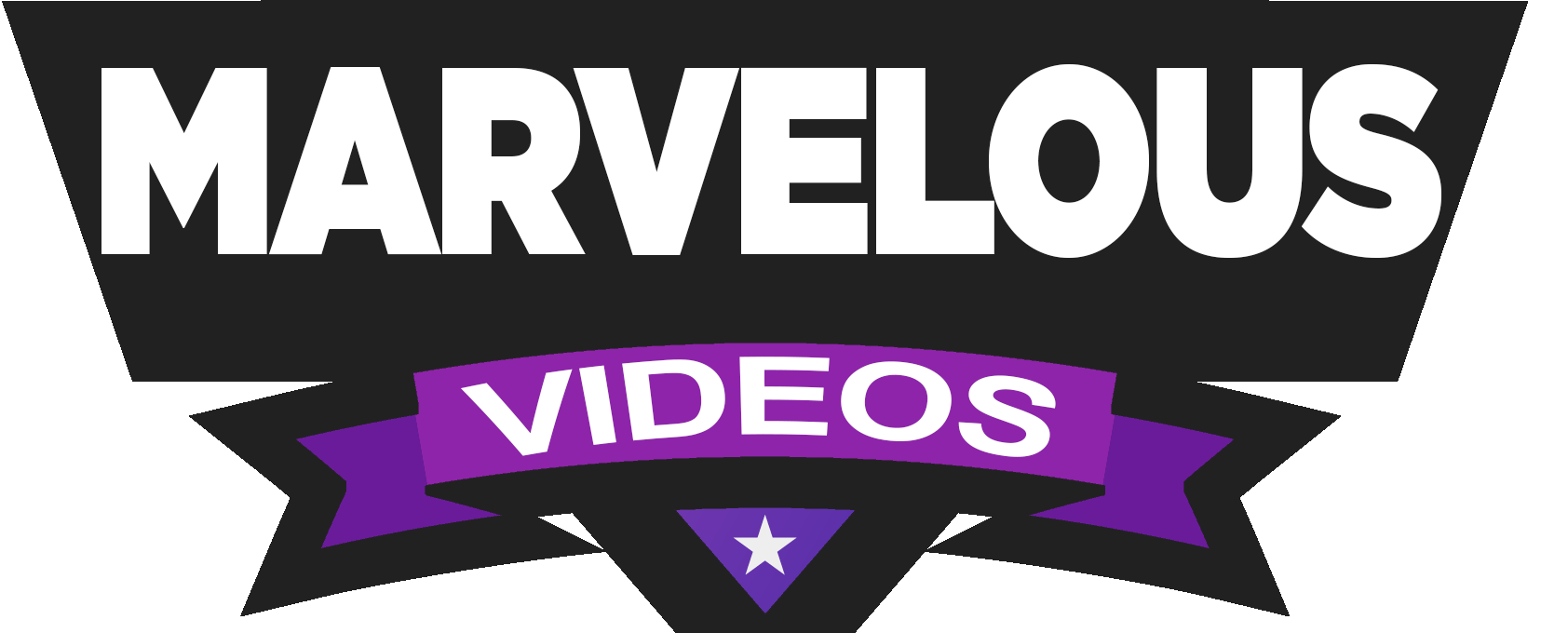Dear fellow Marvelous Gamers, welcome. We have another video for you folks when we return.
In 2023, Street Fighter 6 will be made available on PC, PlayStation 4, Xbox Series X|S, and PlayStation 5. There is not yet a set date for the release. However, given the game’s current state, we do not expect to see Street Fighter 6 until the third quarter of 2023.
Fans have cherished the Street Fighter franchise ever since the debut of the first game in 1987. Even if there have already been multiple updates, fighting game enthusiasts frequently look for other activities to keep them busy because the series is known for having a long wait between releases.
Comparable to Street Fighter, other combat franchises provide a similar experience while including unique elements.
There are games that many casual and serious players have not even heard of, but titles like Tekken, Mortal Kombat, and Injustice are very well-known.
Let us put them on a list!
BlazBlue: Calamity Trigger (2008)

Arc System Works published the fighting game BlazBlue: Calamity Trigger in 2008.
BlazBlue is a game with it all, including amazing characters, stunning environments, a great soundtrack, a tonne of unlockables, and — most importantly — enjoyable action. Similar to other 2D fighters, BlazBlue pits two characters against one another in combat on a 2D plane.
One of my favourite features of BlazBlue is how straightforward the game’s basic battle system is. Despite having a lot of depth and extremely difficult advanced techniques, BlazBlue just has four buttons that players need to get used to. Attacks A, B, C, and D. Drive is a distinctive attack that is character-specific, and the “D” represents that.
The overall layout of BlazBlue as a video game is superb. In addition to Arcade, Score Attack, Training, Replay Theater, a vast portfolio of unlockables, and, of course, multiplayer options, there is a Story mode with three possible routes for each character to select.
Every mode works flawlessly, and the game’s designers paid special attention to even the smallest of details. Whether you browse the options menu to modify the HUD positioning, window transparency, message speed, and countless other settings, or you simply admire the drool-inducing symbols that represent each character in high-style, you can tell that ARC System Works went above and beyond when creating this game.
Let us have a brief discussion of the plot. A creature known as the “Black Beast” threatened to exterminate humanity before the events of the game. The world was rescued by six heroes who used magic. They helped humanity create “Ars Magus,” a fusion of magic and science, to fight the Black Beast. This affair would ultimately bear the appellation The First War of Magic.
The Novus Orbis Librarium, popularly known as “The Library” or the “NOL,” was established after the battle to rule the globe via Ars Magus. The usage of Ars Magus in almost every aspect of life and the growing socioeconomic divide between those who could and couldn’t utilise Ars Magus contributed to a tremendous deal of opposition that the Library sparked. The Second War of Magic, also known as the Ikaruga Civil War, which broke out when the city of Ikaruga publicly revolted against the NOL, would eventually grow out of this discontent years later. After winning the battle, the NOL established a stricter system of government, punishing any opposition to it with death.
A branch of the NOL was entirely destroyed by an SS-class rebel known as Ragna, also known as the “Grim Reaper,” in December AD 2199, some years after the Second War of Magic, in an effort to destroy the Librarium. The NOL quickly issued the greatest bounty ever, accessible to anybody who could capture him to stop him. The Azure Grimoire, a potent variation of Ars Magus, is in Ragna’s possession. Due to this, Ragna was sought after by the NOL and other fighters for both his bounty and his Azure Grimoire.
The gameplay of Calamity Trigger is reminiscent of older fighting games where maintaining a constant pace without going on the defensive is the key to success. Since they are used to playing with an offensive mentality, diehard Street Fighter fans will like the game’s overall aggression.
Killer Instinct (1994)
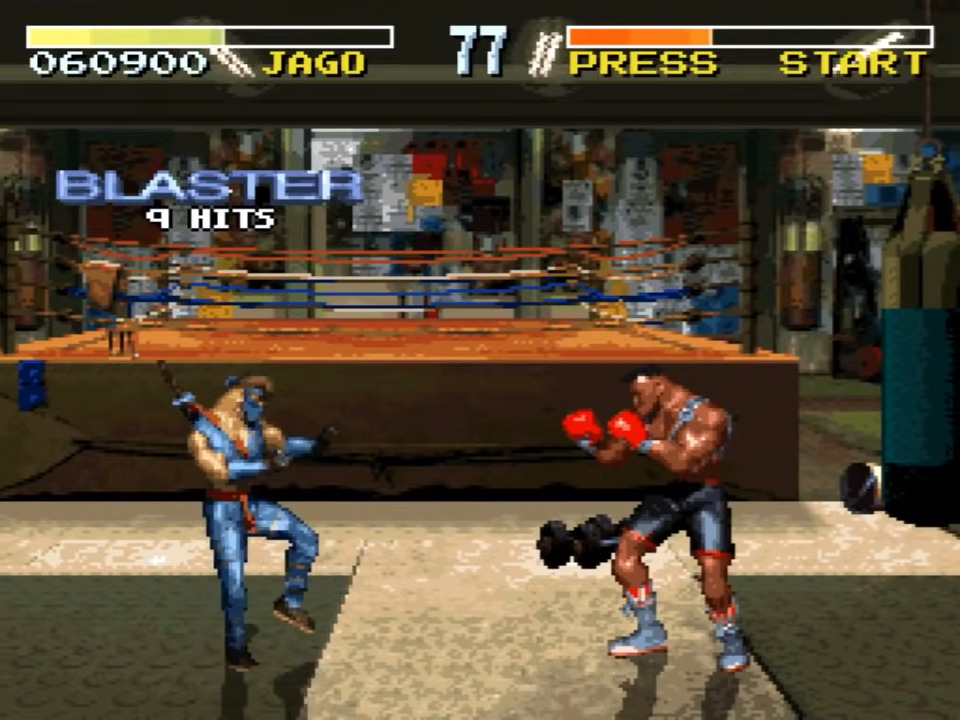
Fighting video games in the Killer Instinct series were developed by Rare and released by Midway, Nintendo, and Microsoft Studios. In 1994, the first iteration of Killer Instinct was published for arcades; in 1995, it was made available for the Super NES and Game Boy. Due to its success, a sequel, Killer Instinct 2, was created and published in 1996 for arcades. Killer Instinct Gold was then released for the Nintendo 64. The franchise was revived with the release of Killer Instinct (2013) for the Xbox One on which we are talking about!
The battle in Killer Instinct is fluid, intricate, and well-informed by the blunders of its forerunners. Combos are made to seem like a logical extension of the neutral game in Killer Instinct, thanks to a clever set of interconnecting principles. In addition to addressing the issue of long-form combos being one-way exchanges where one player plays while the other observes, Double Helix has done a fantastic job of remaining loyal to KI’s heritage.
The six characters in KI all seem different and well-rounded: Sabrewulf dominates with a quick, high-low mixup game but makes you work to get in close enough to use it. Glacius is the complete opposite, controlling vast amounts of space from near/long ranges but struggling once opponents get in his face. Jago offers players with solid fundamentals an option for every situation. Orchid, Thunder, and Sadira—a newcomer to the series with excellent aerial mixup options—complete the cast.
Advanced and intermediate gamers also receive some fantastic toys. Practice mode may be configured to show combo status indications, hitbox displays, and frame data all at once, giving you an unheard-of amount of real-time technical information. Even better, most of it can be turned on when you view replays of your offline and online games, which are automatically recorded and preserved for you as you play.
The game’s roots are built on Street Fighter. They appear to be the same game and share the same footsies and basics. Being skilled in Street Fighter puts you in a good position when playing Killer Instinct. Mortal Kombat’s mortalities also inspire the game’s finishing techniques.
King Of Fighters XIII (2010)
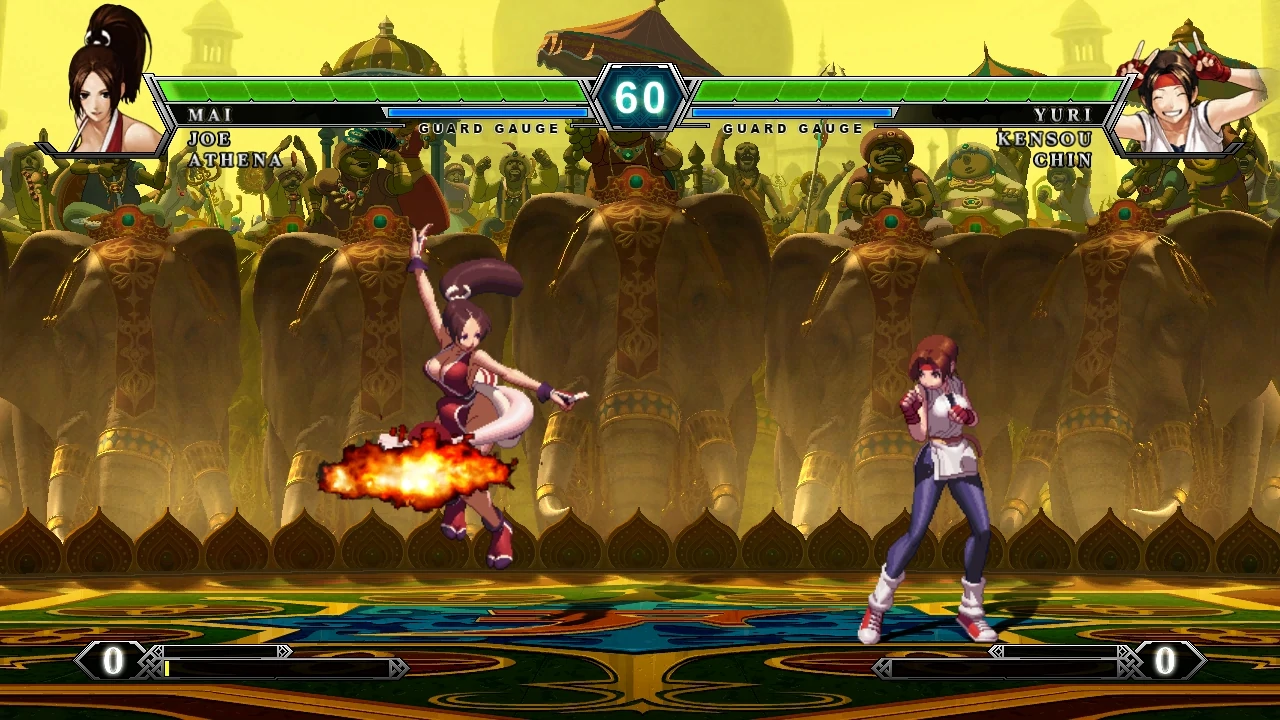
Whatever your feelings are about the brand, you can’t dispute that the King of Fighters series is prolific. SNK’s flagship arcade fighter, now in its 13th edition, has been sucking up quarters for over a decade, mixing the lineups of various SNK fighters, such as Fatal Fury and Art of Fighting, as well as several non-fighting titles, such as Ikari Warriors. The franchise has stayed true to its roots, being firmly rooted in 2D and making a few tweaks here and there while preserving its overall appearance and feel over the years.
With the help of the rosters from other fighting games in SNK’s fighting library, King of Characters XIII includes more than 30 fighters from the series. Teams of characters are formed from among them. The story requires you to play in pre-selected groups of three, with each team featuring their specific relation; for instance, there is a team of Fatal Fury fighters, a team of Art of Fighting characters, and so on. While you can develop your own team of three when playing through the arcade mode, you are forced to play in pre-selected groups of three for the story.
King of Fighters XIII has stunning visuals, with 2D sprite-based characters that are brilliantly animated and richly detailed backgrounds. The character models are pretty nice, even if they have a little pixelated appearance. They each have their individual details and smooth motions. The settings here, nevertheless, definitely take centre stage. Every single level is jam-packed with ludicrous amounts of detail and wacky activities.
The look and feel of this game is very similar to Street Fighter, but King Of Fighters has more mobility choices and faster gameplay pacing than Street Fighter. The fact that Takashi Nishiyama, who created Street Fighter, has had little influence on the series may surprise many unfamiliar with the fighting genre. After the original Street Fighter was launched, Nishiyama went on to work at SNK, where he developed Fatal Fury, which was considered the spiritual successor to Street Fighter.
The characters’ brutal combat techniques are largely how Street Fighter and The King of Fighters XV are related. Fans of Street Fighter will enjoy this lineup since there is no holding back; each fighter has their own distinct moves that emphasise strength.
Virtua Fighter V (2006)
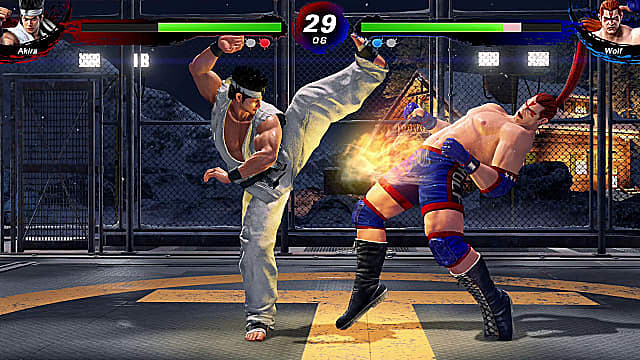
Character balancing is a critical element that contributes to Virtua Fighter’s enjoyable gameplay. Virtua Fighter has done a great job of providing players a chance with each and every fighter on the roster. There are occasionally some overpowering manoeuvres, but they are rare at best and are obvious after a few bouts.
Accordingly, proficient Pai Chan users won’t consistently outperform skilled Aoi users, and skilled AOI users won’t consistently outperform proficient Akira users. Nothing in a fighter is more crucial from a mechanical perspective than that.
Virtua Fighter 5 is really fun to play against another person. The intuitive controls and challenging gameplay keep you returning for more even when you get your ass handed to you by a stronger player.
Virtua Fighter 5 kicks a whole lot of MMA ass. It offers one of the most intuitive and robust fighting systems ever assembled, and the customization options and quest mode are great fun. Granted, its AI isn’t excellent, it has a couple of interface issues, and the lack of online is a significant negative. Still, the mechanics here are so unique that it doesn’t hurt the overall package as much as it would in other games.
The plot is also interesting, The Fifth World Fighting Tournament invites have all been distributed. The world’s top 17 fighters are starting their last preparation stages. There is no space for error in this competition, so they must learn from their past failures and perfect every area of their mind, body, and spirit. Most of them aren’t aware that J6 is funding the tournament and that the syndicate’s top-secret Dural programme is already in operation.
J6 has even darker ulterior goals for the competition. The scientists of J6 are building the ultimate combat machine with human traits in the organisation’s drive for global dominance. After Kage-Maru beat their first model in the Fourth World Fighting Tournament, they decided to abduct Vanessa. With the aid of an insider, she could flee, but not before they took her fight data and transferred it to the new, more sophisticated Dural model known as V-Dural.
J6 is driven to identify the traitor who freed Vanessa and establish whether V-Dural is prepared to take down the strongest fighters in the world. Both will be made known at the Fifth World Fighting Tournament.
Fans of Street Fighter will identify with the characters’ straightforward personalities and designs since the action in this game is its primary selling point. The most skilled fighters will enjoy this gratification the most since, like in Street Fighter, they may counterattack their opponent’s assaults with precisely timed techniques of their own.
Asura Buster – Eternal Warriors (2000)
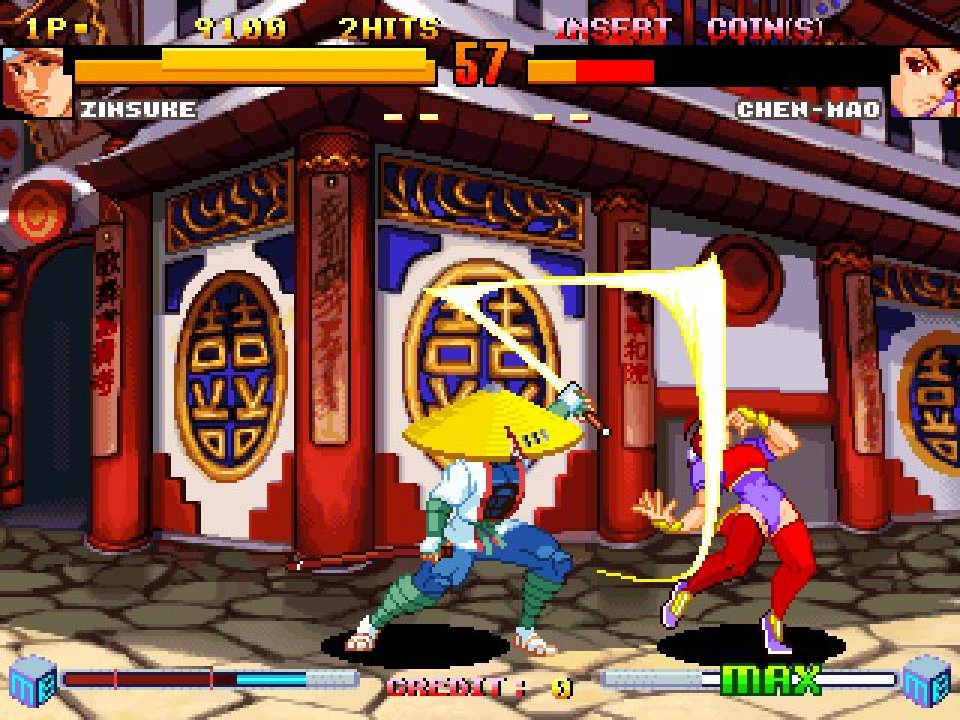
Fuuki created and produced Asura Buster – Eternal Warriors, a 2000 one-on-one fighting arcade game. It is the sequel to the arcade game Asura Blade: Sword of Dynasty, which was released in 1998.
Garou: Mark of the Wolves is a 1999 fighting game released by SNK, first for the Neo Geo system and subsequently for the Dreamcast as Fatal Fury: Mark of the Wolves. It is the ninth entry in the Fatal Fury series.
Asura Buster’s gameplay system is similar to that of its predecessor, with a three-button system and some of the same fighting techniques such as air blocking, retreating and advancing, a roll and a leap up after being knocked to the ground, a push-back from within blocking, and a two-button melee assault. Asura Buster, like its predecessor, includes a super gauge system known as the Magic Gauge that can be viewed at the bottom of the combat screen and that a player may fill up by striking, being hit, or utilising special attacks. Once the player has obtained a MAX level from the Magic Gauge, they can perform either a Super Move, an EX Attack, or a Boost Mode.
The story goes like this, Three years have passed since the events of Asura Blade, and the post-apocalyptic world has been in a state of calm and peace following the deaths of S. Geist and Curfue, who were both killed by Yashaou from within the final fight of the battle. Still, a new threat has emerged as a continent’s sudden and shocking sinking has returned the post-apocalyptic world to a state of chaos and destruction. A few fighters from the Asura Blade event three years ago and a few new warriors will find themselves caught up in a dark and shadowy plot as a mysterious yet cruel monarch strives to become the world’s next supreme ruler.
The game’s mechanics might feel like a tuned-down version of Street Fighter, but there is much more than meets the eye.
Fatal Fury: Garou – Mark of the Wolves (1999)
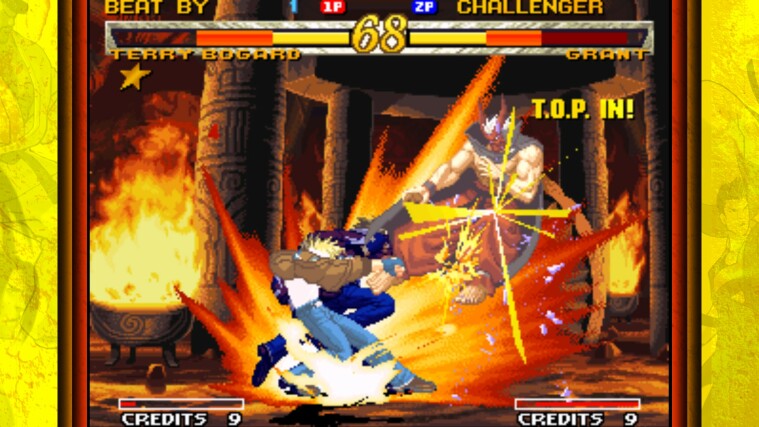
Fatal Fury is between Street Fighter and Guilty Gear in terms of zaniness and complexity, resulting in a decent balance. The characters are endearing, and the battle manoeuvres are simple enough that even inexperienced fighters may have fun with them. You can manage all Fatal Fury has to offer if you can complete the typical fireball moves and aren’t frightened by many punch and kick buttons.
The TOP (Tactical Offense Position) system is the most noticeable aspect of the combat mechanics. You choose your TOP range on your health metre before entering a fight. It might be at your health bar’s beginning, middle, or end. When your health reaches this TOP level, your character receives extra strength and unlocks new moves.
Those who aren’t exceptionally adept at fighting games can still progress via the Story Mode. If you lose in Story Mode, you can restart the game at a lower difficulty, with your power metre full (allowing you to unleash a deadly attack immediately), or with your opponent at 1/4 health.
Ten years after the murder of criminal lord Geese Howard, the city of Southtown has grown more tranquil, earning it the moniker “Second Southtown” in allusion to its previous corruption by Geese. A new combat tournament dubbed “King of Fighters: Maximum Mayhem” begins in the area, and various characters from past King of Fighters tournaments compete in it.
Along with the Story Mode, there is a Survival Mode. Your randomly picked opponents drop power-ups in this never-ending sequence of combat. The aim is to win as many battles as possible, with the sole chance for health replenishment coming from the odd bauble dropped by your opponent. Survival Mode is intended for individuals with a little more experience and talent.
The game is put in the same bracket as Street Fighter 3: Third Strike. If you ask me, I will say this game is better, but it was slept on.
It’s a shame SNK didn’t pay more attention to the graphics, presentation, and music. Still, if you’re seeking a pleasant diversion and have grown tired of Street Fighter II, Fatal Fury is a viable choice.
Power Instinct 2 (1994)
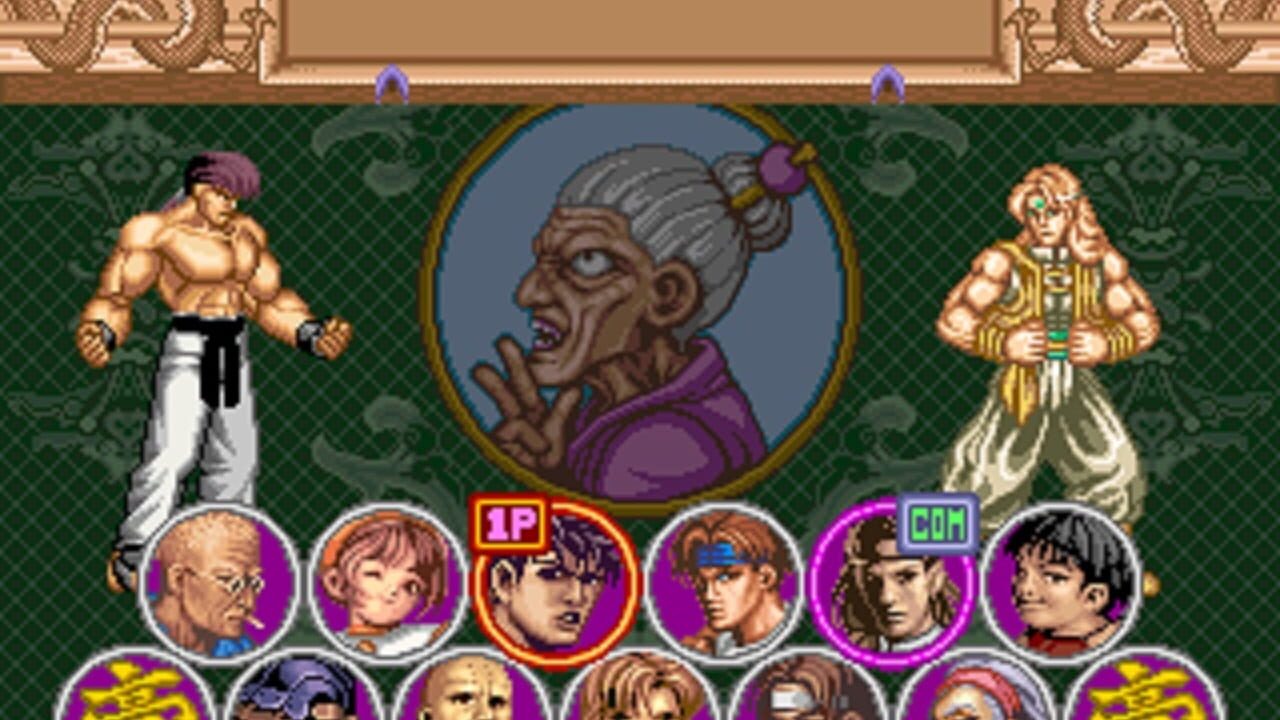
Atlus developed the Power Instinct fighting video game series.
The show is well-known for its absurdist comedy. The inclusion of the transformation element was unique to the series: some of the characters may alter their look and combat style by merely performing specific actions (typically a throwing motion), but this has not been incorporated in every entry in the series.
Other elements include each character’s ability to make a double leap, run, and attack while running. If you enjoy old-school Street Fighter II-style fighting games and don’t mind probably the most obnoxious sound in any arcade game, this may be the game for you.
The plot of Power Instinct centres around the Gouketsuji clan. Being the head of the Gouketsuji clan is a high honour, and you get a lot of money as the clan leader. They hold a massive fighting tournament to choose who will become the leader. The current Gouketsuji clan chiefs are two old ladies, Oume and Otane, who have been competitors since the last game. There is a new old lady, Osima, who is even older than Oume and Otane and wants to be the clan’s new leader.
Power Instinct 2 attempts to differentiate itself from every other fighting game at the time by incorporating two elements: a sense of humour and genuinely outstanding gameplay mechanics. In terms of playability, it’s actually rather good. For the most part, it is a carbon duplicate of Street Fighter II, but it also has a few unique additions. The stress metre is the first and most noticeable. As your character suffers an injury, they will get stressed. To empty it, use a super move or a Stress Shot. You can hoard many bars of stress, which can lead to some fascinating methods.
Some characters are capable of transformation. The elderly lady Oume is a perfect example. She has the ability to turn into a more robust, younger version of herself. She possesses many of the same movements but is considerably stronger, quicker, and more serious about them. She throws significantly faster and more powerful fireballs when she is younger. She tosses her dentures as an elderly lady. And believe me, it hurts!
Power Instinct 2 also has one of the earliest vocal soundtracks in a fighting game. Most stages have theme tunes, ranging from folk to hard rock to J-pop. Several subtle nuances let Power Instinct 2 stand out. The pre-battle screen features a variety of animations, including lightning bolts, flaming fires, and floating hearts. Each match’s winner gets to scribble on the loser’s face, resulting in some humorous post-battle images. Even the win/loss statements for the characters fighting each other are personalised.
This is the one game in our list which is probably least similar to any Street Fighter game out there apart from the basic style and setting.
Skullgirls (2012)
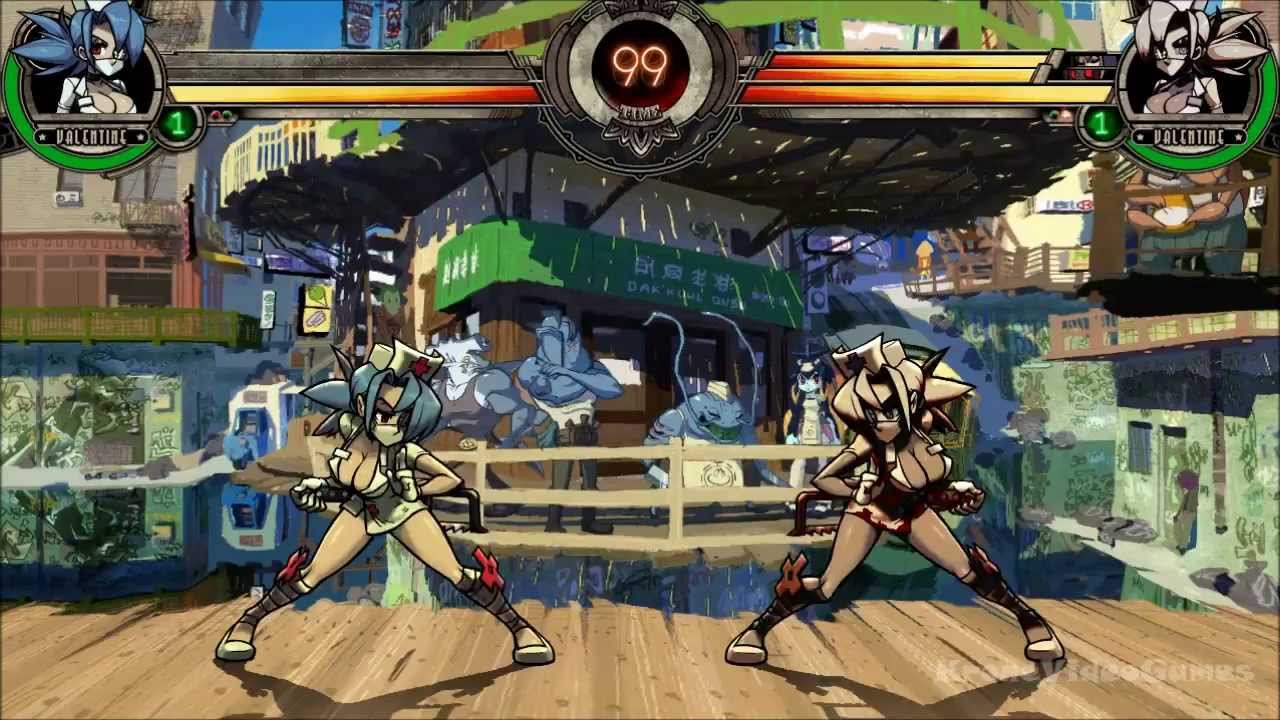
Skullgirls is a 2D fighting game published by Autumn Games and developed by Reverge Labs. Skullgirls pits players against one another in teams of one, two, or three characters, intending to knock out their opponents or have the highest total health until time runs out. The game’s setting focuses around the “Skull Heart,” an artefact that grants desires to women. If a wisher with an unclean soul utilises the Skull Heart, she is converted into the “Skullgirl,” a monster.
Skullgirls is set in the fictitious Canopy Kingdom, a country reminiscent of postwar America in the 1940s, controlled by the Renoir royal family and besieged by the Medici mafia. Several individuals and groups attempt to get the Skull Heart in a corrupt and war-torn globe.
Nancy Renoir almost drove the world to destruction during the Grand War, a struggle waged between the Canopy Kingdom and two neighbouring kingdoms, when she sought to wield the Skull Heart for the sake of place. Seven years later, a slave girl called Marie Korbel ascended to the position of Skullgirl and began tormenting the Canopy Kingdom to seek revenge on the Medici. The game follows numerous combatants on their missions to confront Marie and seize the Skull Heart, each with their own reason for wanting to destroy the Skull Heart or use its power for their own gain.
The game has a story mode, an arcade mode, a vs mode, a training room, a tutorial mode, and online play through the GGPO networking library. Skullgirls incorporates many novel features designed to address system and balancing issues, such as endless combo detection.
When the game recognises a looping combination by monitoring the players’ assaults, the other player can escape by pressing any button. Skullgirls also protect against “unblockable attacks,” which occur when a player, for example, performs a low-hitting move and a high-hitting assist attack simultaneously, making the opponent’s block practically blocked impossible. After successfully stopping any assault, the game attempts to address the issue by providing a limited period of unblockable protection.
Skullgirls, like Street Fighter, has a steep learning curve owing to its approach to gameplay and controls. The game modes are precisely what you’d expect from Street Fighter.
World Heroes (1992)
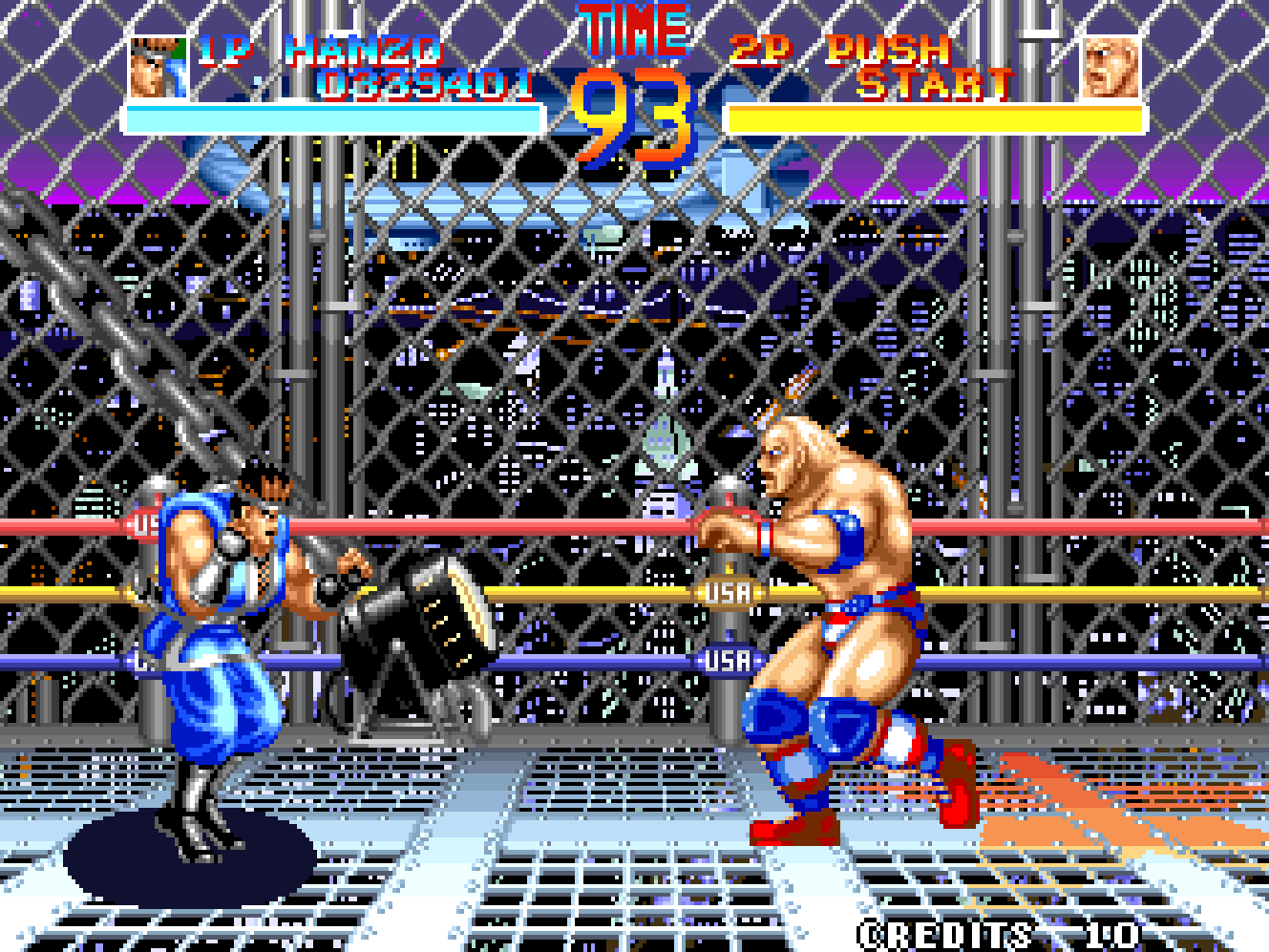
World Heroes is a fighting arcade game released in 1992 by Alpha Denshi (later known as ADK) with support from SNK.
World Heroes has long been considered a rip-off because it was one of the first vs fighters to reach the arcade scene following Capcom’s Street Fighter II. And it’s not an unwarranted notion; there are some obvious parallels between the two games, beginning with the character selection screen.
Your character flies around the Earth to take on different fighters in different cities around the world… there’s just a striking similarity in appearance here, and anyone who’s spent time playing the Street Fighter titles will notice. The main character, Hanzo, is joined by Fuuma, a near-clone of himself dressed in red attire. Ryu, like the main hero of Street Fighter, is joined in that game by a close clone of himself in red clothing named Ken. There’s only one woman in the lineup (similar to Chun Li), a crazed Russian character with massive grab attacks (identical to Zangief), and another guy whose arms and limbs stretch out to attack his foes (similar to Dhalsim).
There are eight playable characters and two distinct game modes to select from: “Normal Game” and “Death Match.” In “Normal Game,” players must beat the other seven playable characters in a random sequence before facing the final boss Geegus, all while utilising the chosen character. If a player overcomes an opponent, they advance to the next opponent.
“Death Match” works differently from Normal Mode. Environmental dangers such as electrical obstacles, spiked walls, oil puddles, and others will be present in the ring, which players must avoid while battling. Players can also push their opponents to defend against environmental threats. In addition, unlike in the regular game, where conflicts occur in numerous places, all death match encounters happen in a confined boxing-style arena in front of a live audience.
To summarise the narrative, Dr. Sugar Brown, a well-known and famous scientist, is desperate to discover who the greatest fighter in history is. He has taken tremendous measures to ultimately acquire the answer to his own inquiry in the far future.
Dr. Brown has brought together several of the world’s most powerful superheroes from each century so that they can all compete and participate in a one-on-one fighting/death-match tournament that Dr. Brown has organised, with the tournament itself being used to determine who the strongest fighter of history is. Dr. Brown and the other combatants have no idea that an unknown menace is discreetly observing them as the tournament progresses and that this unknown threat might potentially jeopardise them and the rest of the globe.
With its collection of historical figures, World Heroes had enough of a hook that arcade-goers in the early ’90s probably weren’t too adverse to tossing in a few quarters to check it out. But after a few games, those gamers, like you, would be back in front of the Street Fighter cabinet.
Final Fight (1989)
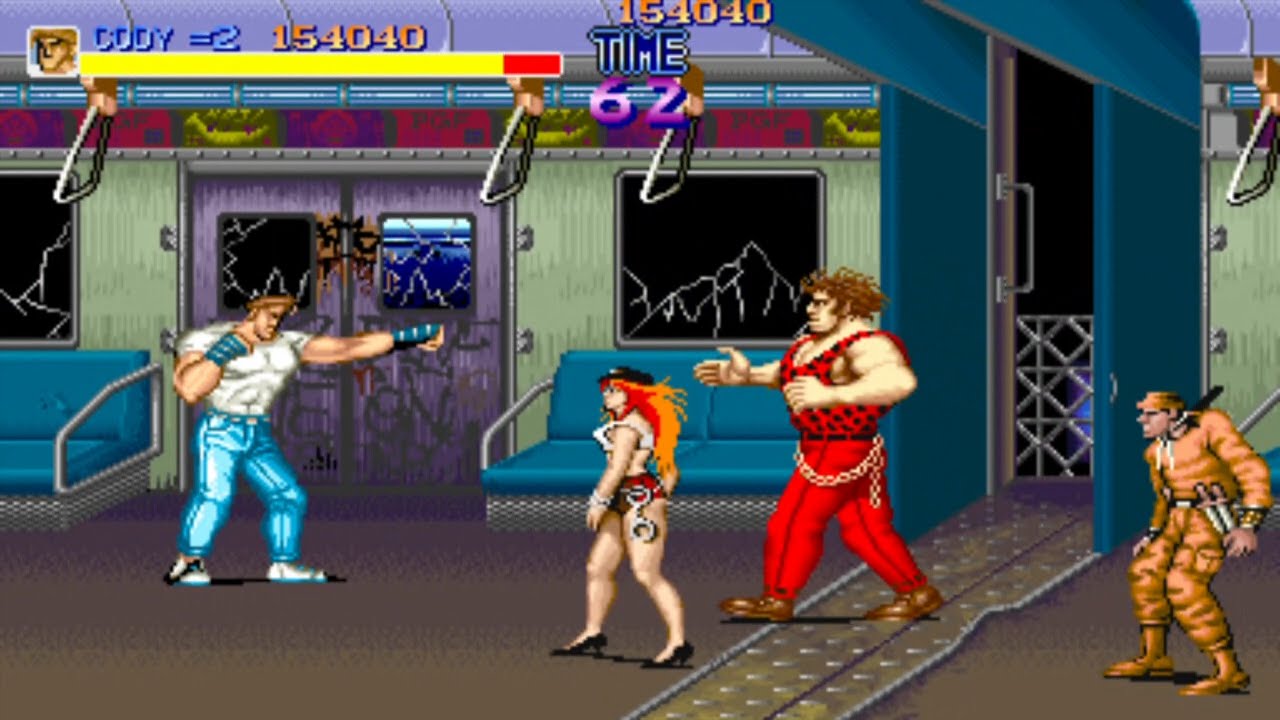
Capcom’s Final Fight is a side-scrolling beat-’em-up video game. It was the sixth title produced for the CP System hardware and was initially launched as an arcade game in 1989 (Two years after Street Fighter). The game, set in the fictitious Metro City (Parodied from New York City), lets the player control one of three street fighters: former professional wrestler and city mayor Mike Haggar, experienced brawler Cody Travers, and modern-day ninja Guy. When Jessica (Haggar’s daughter and Cody’s fiancée) gets abducted by the Mad Gear Gang, the trio sets out to rescue her.
According to the game’s introduction, The city’s crime rate allegedly reached frightening heights in the 1990s (or 1989 in the Japanese version), but after pro wrestler turned politician Mike Haggar was chosen as the city’s new mayor, Metro City saw a significant transformation. During his leadership, Haggar brought the city’s crime rate to an all-time low.
Although Metro City residents appreciated Haggar’s attempts to lessen crime, the Mad Gear Gang, the city’s most powerful gang, would not be easily vanquished. Haggar rejected the gang’s offer to bribe him with a significant sum of money to stop him from going after them, which was made by the dishonest businessman Belger. Mad Gear, still desperate to bring Haggar under their control like the previous mayor before him, kidnapped his daughter Jessica, causing further unrest among the population.
When Haggar learns of his daughter’s kidnapping, he becomes enraged and vows to take his struggle against Mad Gear personal. Haggar hires Cody Travers, a skilled fighter and Jessica’s lover, as well as Guy, a ninja in training and Cody’s good friend/rival. The three commit themselves to eradicating the Mad Gear Gang and rescuing Jessica from their hands.
The game became famous for its horrific continue screen, in which the player character is depicted tied to a chair with a package of explosives on the table in front of him; the figure attempts to escape while the 10-second time limit clocks down. If the player chooses to continue, a knife falls from the ceiling, detaching the fuse from the explosive.
Even after a decade and a half, the gameplay is still somewhat enjoyable. As the side-scrolling beat-em-up unfolds via its shaky tale, cans of whoop-ass are released at every imaginable turn. Even though the entire story isn’t particularly memorable, the character names and models are rather amusing. You’ll meet endearing characters like El Gado, Holly Wood, and even Andore (the Japanese version of Andre), who is based on the famed Frenchman and wrestler Andre the Giant.
Those who haven’t played are urged to do so in order to witness what some of the hottest arcade ports of the 16-bit period looked like. The game is still as enjoyable to play now as it was 15 years ago. From the animations and attacks to the responsive and straightforward controls, it honestly seems like a side-scrolling Street Fighter II.
This game has a special nostalgic connection to me as it is one of the first ever video games I ever played on my NES console when I was just 6 or 7 years old! Trust me; I still go back to it more than COD or NFS!
Did we miss any game? Let us know in the comments below. If you liked this video, press the like and share button. Also, subscribe to our channel if you haven’t already. See you in the next one.
